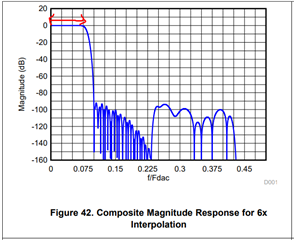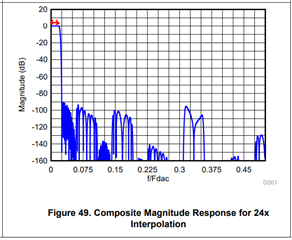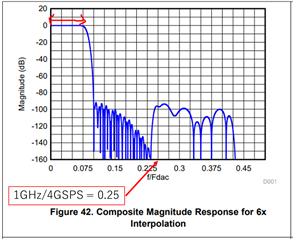Tool/software:
Hello team,
I am confused about the interpolation of high speed DAC.
On the datasheet, there are several Magnitude Respose for each interpolation factors.
The lower interpolation rate (6x vs 24x) seems to have wider flat band response.


I thought higher the interpolation result wider flat band for output because more over sampling.
Why does lower interpolation factor result wider band?
Best Regards,
Kei Kuwahara


